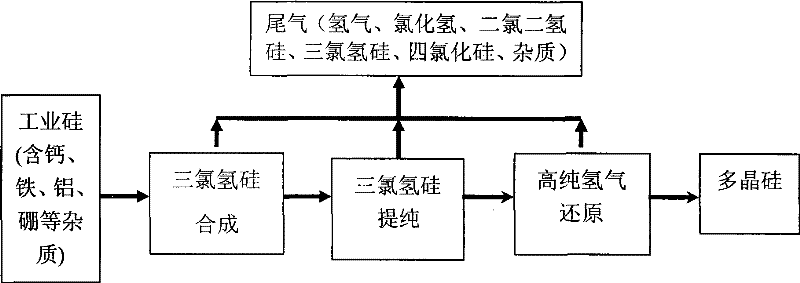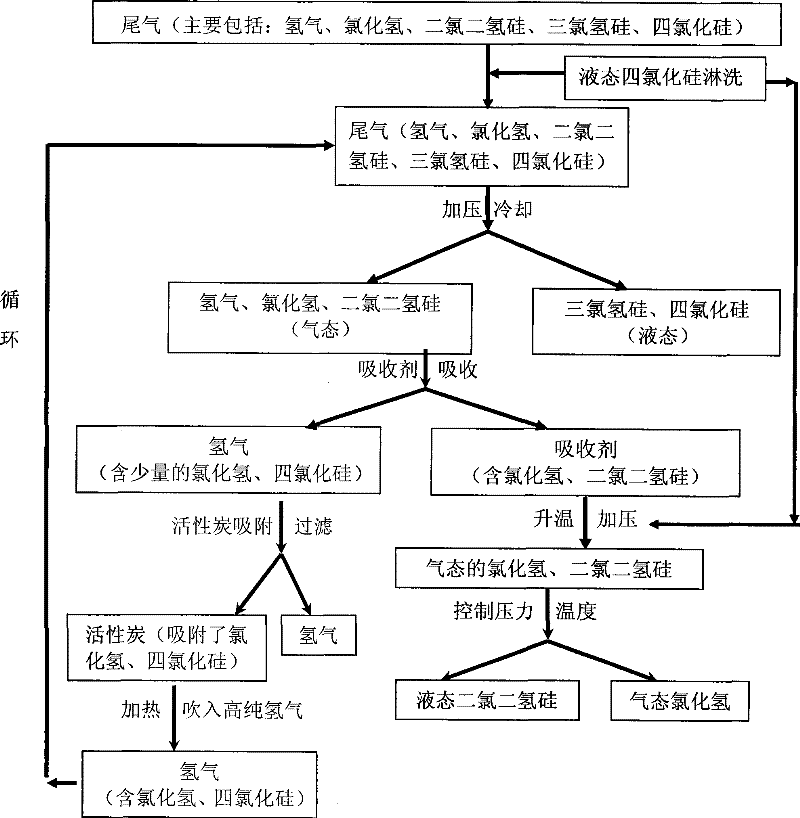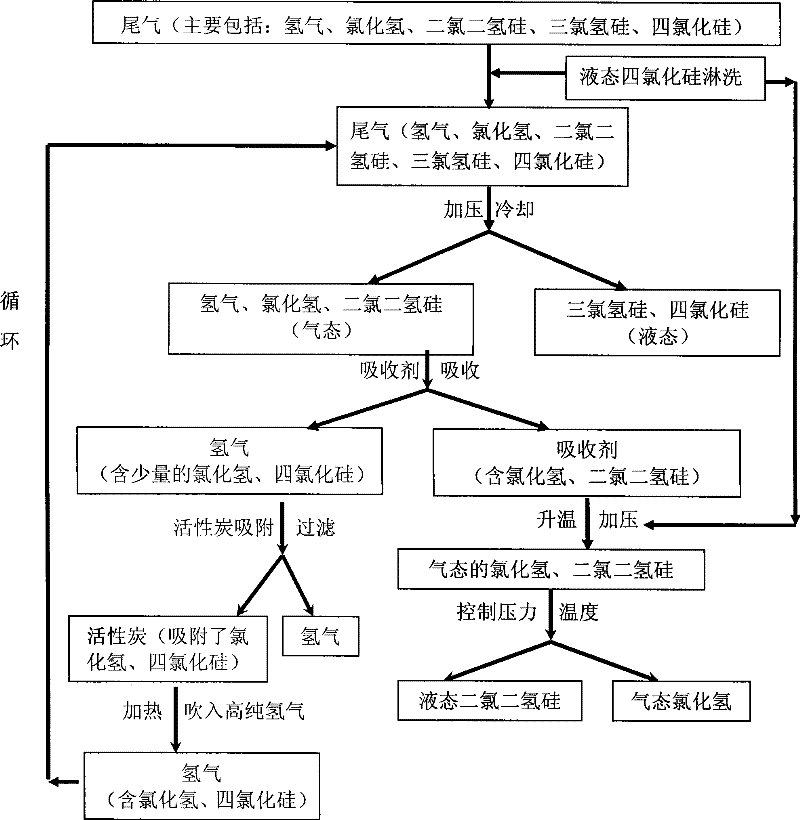Method for recovering tail-gas generated during producing polycrystalline silicon using silicon tetrachloride
A technology of silicon tetrachloride and polysilicon, applied in the direction of silicon halide compounds, silicon, halosilane, etc., can solve the problems of insufficient utilization, large material consumption, serious environmental pollution, etc., and reduce the generation of pollutants and quantity, reducing the generation of pollutants, and the effect of solving environmental pollution problems
- Summary
- Abstract
- Description
- Claims
- Application Information
AI Technical Summary
Problems solved by technology
Method used
Image
Examples
Embodiment 1
[0025] refer to figure 1 , which shows a flow chart of the industrial production of polysilicon that can be applied to the method for recovering the tail gas produced by the production of polysilicon by using silicon tetrachloride according to an embodiment of the present invention. In the prior art, there are multiple methods that can be industrialized The production of polysilicon, application polysilicon production technique of the present invention is to utilize industrial silicon and hydrogen chloride (HCl) as main raw material, generates trichlorosilane (SiHCl) by controlling reaction conditions 3 )-based mixture of chlorosilane and hydrogen, and then trichlorosilane (SiHCl 3 ) after being purified, sent to the reduction furnace to make trichlorosilane (SiHCl 3 ) and auxiliary material hydrogen (H 2 ) reaction, reduction to generate polysilicon.
[0026] In the process of the above-mentioned industrial production of polysilicon, the tail gas produced mainly includes h...
PUM
 Login to View More
Login to View More Abstract
Description
Claims
Application Information
 Login to View More
Login to View More - R&D
- Intellectual Property
- Life Sciences
- Materials
- Tech Scout
- Unparalleled Data Quality
- Higher Quality Content
- 60% Fewer Hallucinations
Browse by: Latest US Patents, China's latest patents, Technical Efficacy Thesaurus, Application Domain, Technology Topic, Popular Technical Reports.
© 2025 PatSnap. All rights reserved.Legal|Privacy policy|Modern Slavery Act Transparency Statement|Sitemap|About US| Contact US: help@patsnap.com



